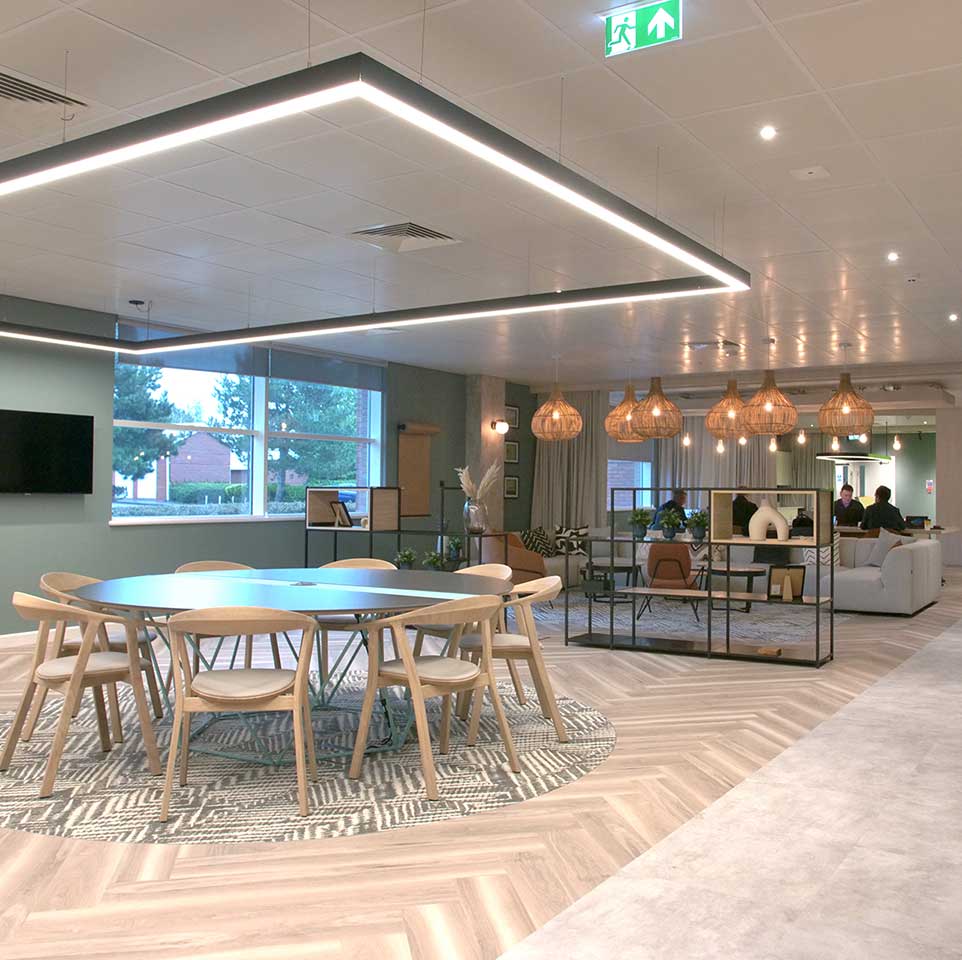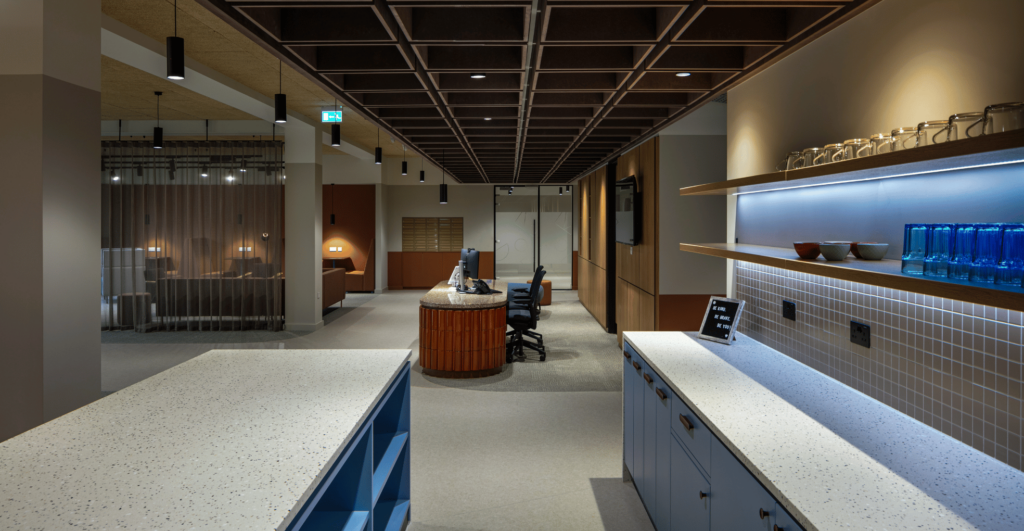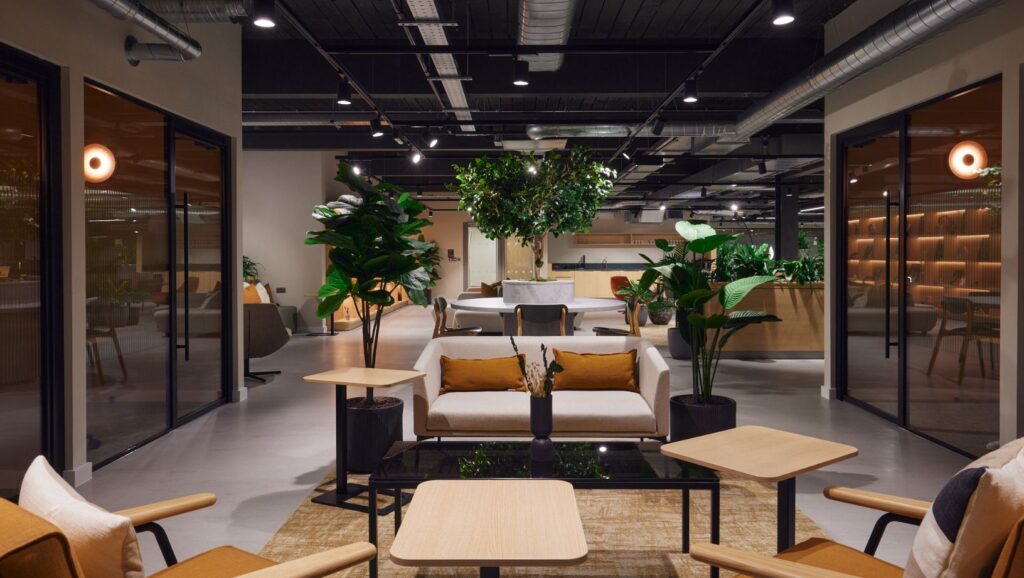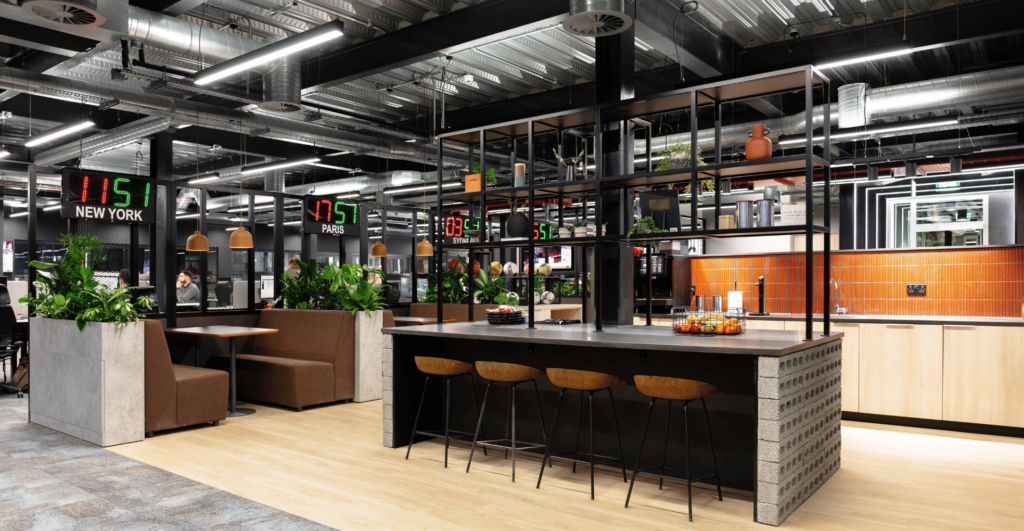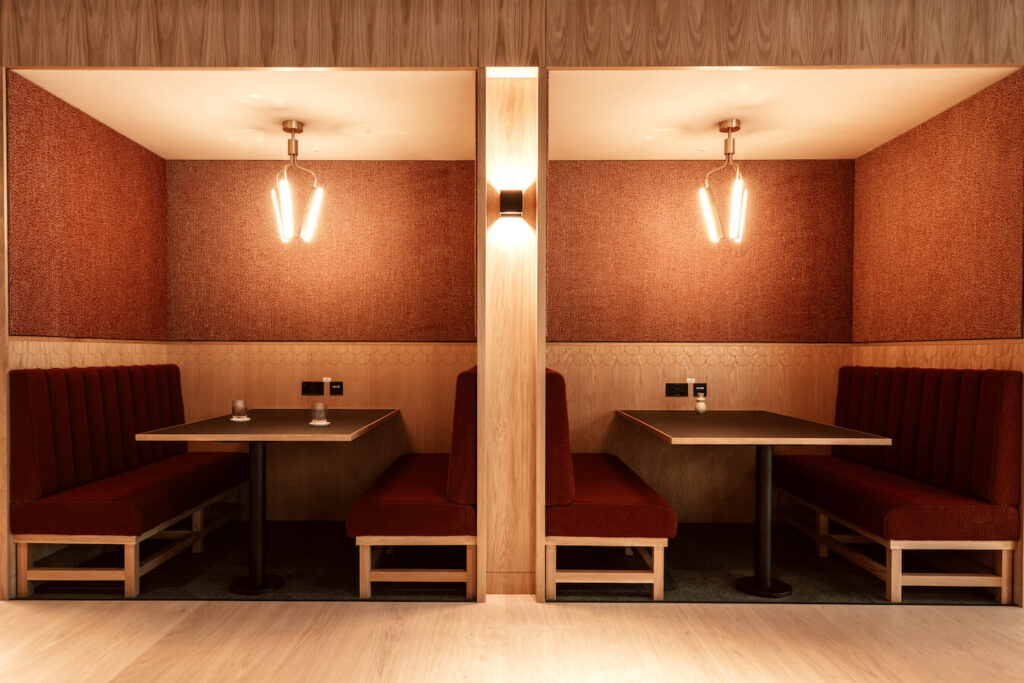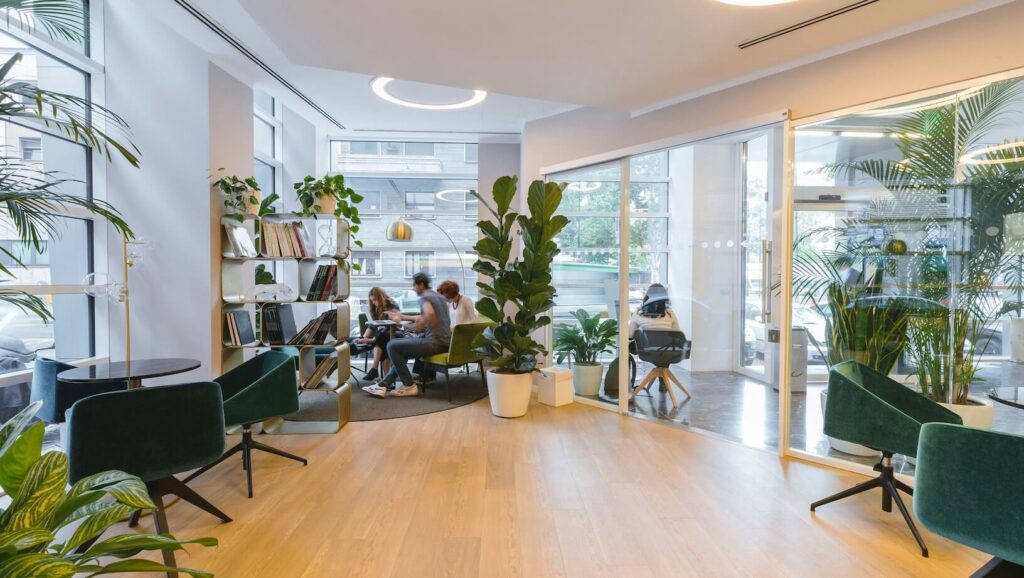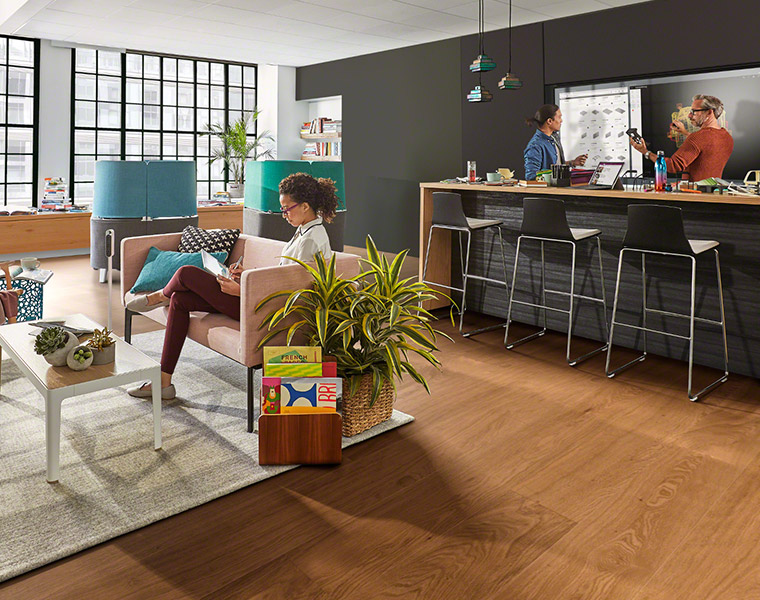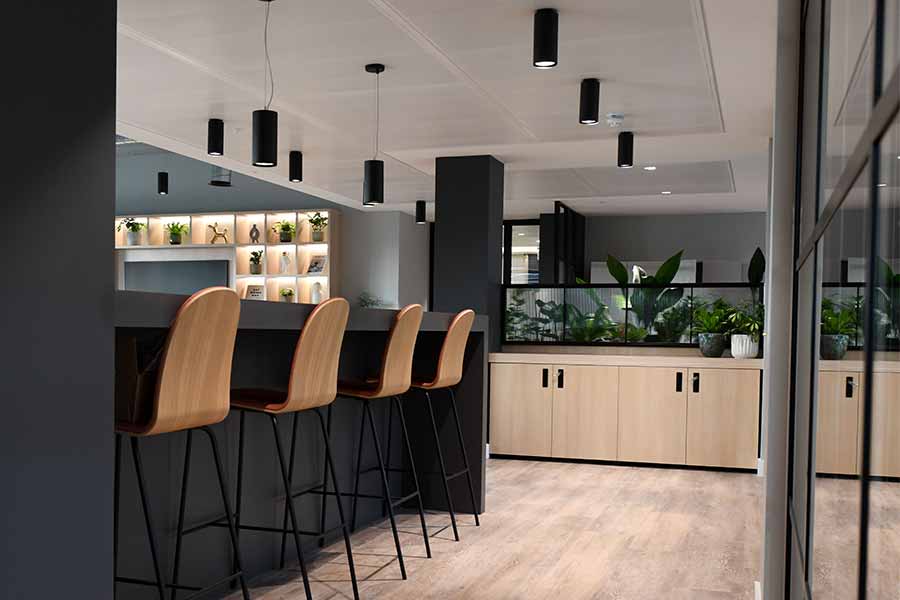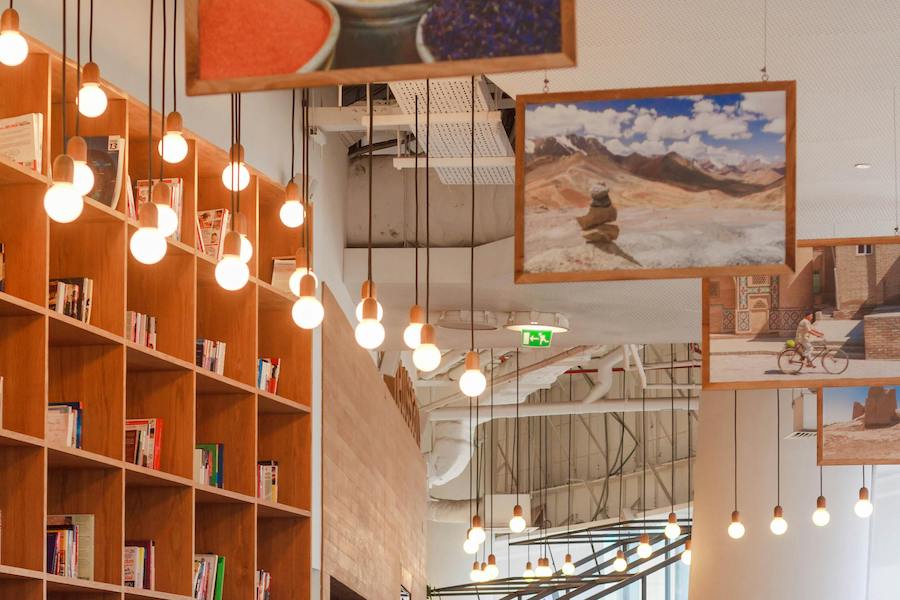Ten or 15 years ago, co-working spaces were a pretty unchartered concept. They existed, sure but certainly not in the same way they do today.
There are now thought to be over 40,000 co-workspaces around the world, so it comes as no surprise that competition in the co-working market is higher than ever.
Research published by Mordor Intelligence showed that almost half (45%) of businesses plan to downsize by 2025 as they turn their attention to shorter, flexible leases.
Fewer business owners now want to continue with the traditional permanent office model, which means co-working is not just a trend but a real milestone movement for how modern businesses operate and facilitate their workforces.
In recent times, co-workspaces were generally reserved for larger cities but now, they’ve spread into smaller towns as businesses of all shapes and sizes embrace new ways of working.
In this blog post, we explore some of the top design-related trends in co-workspaces for 2024 and moving into 2025 and beyond.
Emphasis on holistic experience
When it comes to a co-workspace, tenants today want way more than just a desk to sit at and a reliable internet connection. Modern co-working spaces now need to offer a more holistic experience that recognises the blurring boundaries between ‘work and play’.
Things like yoga studios, meditation spaces, on-site gyms, chef-ready kitchens, purpose-built bars, and games areas are no longer a novelty or even a USP, they’re the norm.
That’s why owners of co-working spaces are now having to go above and beyond to provide multi-faceted, multi-sensory experiences for their tenants. In terms of design and fit out, this means having dedicated spaces for these kinds of attractive amenities.
Fitness studios, equipped gyms, on-site showers, social spaces that are more like bars, entertaining spaces for events, and on-site cafes—all common examples of what the modern tenant has grown accustomed to.
Higher demand for pre-fitted spaces
One of the biggest trends we’re seeing is a growing desire for pre-fitted private offices in co-working spaces, i.e. spaces that have been decorated and fitted out by the landlord prior to the tenant taking occupancy.
Fewer and fewer co-workspace tenants are now looking for ‘empty shell’ spaces that require them to undergo any kind of interior design or fit out project themselves.
The Mordor Intelligence study showed that the number of landlord-fitted spaces being leased to co-working customers doubled back in 2022 and the growth trajectory is still moving upward.
So, what does this mean for those looking for tenants? Well, it means that an increasing number of tenants are looking for ‘plug-and-play’ solutions where they can simply sign a lease and move their things into a fully furnished space.
Landlords should be working with commercial design partners and furniture consultants to offer these plug-and-play-style solutions, or it’s pretty safe to say tenants will look elsewhere.
Stronger hospitality influence
When walking around many modern co-working spaces, you could be easily forgiven for thinking you had found yourself in a swanky cafe, cocktail bar, or boutique restaurant. Many co-workspace welcome areas also now resemble something more akin to a trendy hotel reception.
We’re seeing more and more hospitality influence in co-workspace interior design and fit out and we’re expecting this tendency to continue.
In terms of the kinds of settings co-workspace owners should be thinking about, this includes an on-site cafe with barista-style coffee, a bar area with locally brewed beers in the fridge, and resimercial furniture that makes the space feel like a home-from-home.
Micro details include things like ambient lighting, sensory smells dispersed throughout the space, and cable management that removes obvious traces of the traditional office.
Niche-specific design
Another trend we’re noticing in co-workspace design and fit out is a move away from a generic, cook-cutter approach to more niche-specific strategies.
Niche-specific co-working spaces are those that target a particular industry or type of professional and tailor the look and feel of the space accordingly, as well as the resources and amenities within it.
The gaming industry is a great example. Co-workspaces in this niche, for instance, focus more on things like neon lights, ergonomic office chairs, high-tech integrated, and of course, plenty of social space to relax and rejuvenate by playing games.
To spotlight the opposite end of the spectrum, co-working spaces for those in the medical sector are purposely more minimal in terms of look and feel and have more of a focus on privacy spaces and quiet areas for concentration.
AI efficiency
More advanced technology to connect co-workspace users with clients and colleagues around the world is a standard feature. This includes high-tech video conferencing, meeting rooms integrated with tech, and innovative presentation facilities.
However, we’re now seeing this evolve with the inclusion of more AI technology. This includes things like:
Data-based design that uses trend analysis to inform the types of work settings that space users need and want most.
Personalised design and fit out informed by real-life usage.
Room and desk booking systems.
AI-powered heating, ventilation, and air conditioning systems.
Read more: What does AI mean for the future of office design? >>
Biophilia is as big a deal as ever
It seems unfair to keep raising biophilic design as a trend topic because it’s certainly not something that’s ever going to go anywhere now we understand more about the many benefits of bringing elements of the outdoors in.
That said, it is worth highlighting that biophilia is as popular as ever where co-working space design and fit out is concerned. Not only does it soften the space and make it feel more homely and welcoming, but biophilic elements are also famously proven to boost productivity and wellbeing in the workplace.
Living walls, indoor plants, organic surfaces, organic fabrics, and sustainable design are all touchpoints of biophilia that attract tenants.
More privacy provision
As coworking spaces get busier and more popular, we have noticed an increased need for more privacy and quiet spaces.
Typically, co-workspaces have a great deal of open-plan design, which means there needs to be an active approach to providing settings where people can go to focus individually or have some privacy.
This could be anything from semi-shielded privacy seats to larger privacy booths—it really depends on the size of the space you’re working with and how high a priority privacy is to your space users.
Are you a landlord looking to fit out your co-working space? Or the owner of a commercial property looking to offer plug-and-play solutions to new tenants? Get in touch to learn more about how we can support your project.
